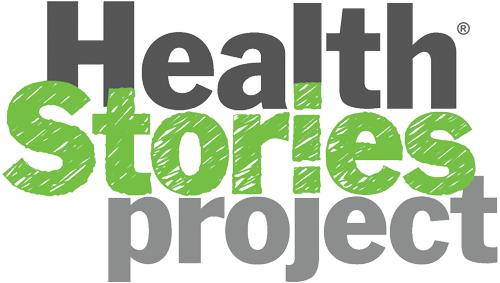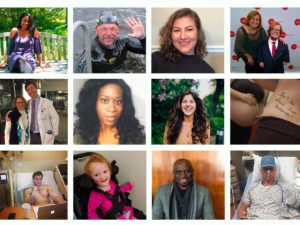In Dallas, Texas, in the late 1970s, Gail Henkin was the youthful, earnest subject of a photoshoot. She smiled. She gazed at the camera. She felt a flutter of pride. Despite her grandmother’s death from lung cancer, she held a cigarette—and many poses—as the camera raced through hundreds of exposures. She was a model. She was a smoker.
The outcome of that shoot, which Gail was asked to join after participating in a cigarette brand focus group, was a print advertisement. It featured a close-up of Gail’s face and hand holding a cigarette along with the sizable testimonial-style headline, “Imagine! Taste this great plus low tar.” The company must have been pleased with the ad, because as Gail said, “It ran in hundreds of magazines.” It buoyed her sense of pride, too, as it made her something of a celebrity.



“That was the most stupid thing in the whole world,” she said without hesitation. “Both my grandmother and mother died of lung cancer.” Though she quit smoking over 20 years ago, in 2015, Gail contracted lung cancer, too.
Finding out that she had the disease was a uniquely traumatic experience—and not due entirely to the diagnosis. While in Florida for a family friend’s birthday, Gail had been walking along the sidewalk of a busy street. She noted pedestrians recklessly crossing the street, not leaving themselves much time between passing cars. She needed to get across herself but turned down a less-trafficked side street first, checked that her path was clear, and stepped onto the pavement. And that’s where her memory of the walk ends. Her next memory is of waking up in the hospital. A distracted driver had hit Gail as she crossed.
Her injuries—including a brain bleed—necessitated x-rays, and the attending neurologist pointed out concerning spots on her lungs unrelated to the accident. Then and there, Gail was sure that an oncologist would determine that the spots were cancer. She had previously been told she had COPD, and that paired with her family history and years of smoking had kept the possibility of cancer in the back of her mind. Her suspicion soon proved accurate: Gail was diagnosed with inoperable stage IV non-small cell lung cancer.
“I wasn’t surprised,” she said of the finding. “The shock was that they couldn’t do more for me.”
The disease might have been borne from genetics or environmental factors. Her grandmother had contracted lung cancer without smoking. As the American Cancer Society has noted, there are multiple causes of lung cancer in people who have never smoked, and “as many as 20% of people who die from lung cancer in the United States every year have never smoked or used any other form of tobacco.” Still, the cigarettes didn’t help.
Related: “Anyone with lungs can get lung cancer.”
“I guess we all think we’re infallible,” Gail said of her choice to smoke early in life. The somewhat dim prognosis given by her doctor made that truth hard to digest. “[He said] he could maintain me—he could treat me—for two years. And everything I read… I didn’t have much of a chance.”
Gail underwent multiple cycles of chemotherapy and immunotherapy treatments, which had no effect on the cancer but made her “feel horrible.” When her doctor called them off to provide her some relief, she spoke with several experts about alternate treatments and clinical trial opportunities. Still, she decided that her circumstances made those avenues unattractive. “I knew I should [be part of a trial],” she said. “That’s how I was brought up. You give. But I thought, ‘I don’t know if I can go through it again.’” So instead of pursuing further treatment, she decided to focus on making the most of the potentially brief time she still had.
The accident and cancer diagnosis had made Gail’s retirement from the real estate field necessary, so she had some time and money available. Given her love of traveling, she seized the opportunity. “I realized that we all say, ‘Oh, we’ll do this next year or in a couple of years.’ But when your doctor says you might have two years to live…I wanted to do [it] while I could.” So she sold her home and set out.
Gail traveled to what her friends and family in Florida called “The Med.”



She visited Italy, France, then Cuba, then took a lengthy Hawaiian cruise. And though she noted that a more deliberate, measured approach might have been financially wiser, she regrets nothing. “It was wonderful,” she reminisced.
Gail’s optimism extends to all parts of her life, including her cancer and that car accident in Florida. She’s quick to point out and emphasize silver linings. “That was my [deceased] mother, making me get hit by that car so I’d get help,” she said with a laugh.
For unknown reasons, the cancer has not worsened over the past five years. Though given 24 months in 2015, Gail lives and breathes today—gratefully—with the same stage IV disease. The tumors have not grown or metastasized.
Gail has carried through the opportunistic spirit of her travels into her everyday life. She exercises, routinely doing Zumba. She again works in real estate. She visits and talks with her two sons and three granddaughters. She speaks her mind. Though she feels she’s “living on borrowed time,” she focuses on what good can come from each passing day.
One unexpected consequence of Gail living such an active life despite her stage IV cancer is the disbelief some people share when they learn of her circumstances. Like so many other conditions that don’t present physically, Gail’s healthy appearance belies the cancerous tissue in her lungs. Over the years, she’s been repeatedly greeted with skepticism when revealing her disease. “[Some people] look at me, and they’re like, ‘Yeah, right.’”
You don’t look sick. While the sentiment could be flattering, it can also make living with this disease—or any number of other conditions—more mentally taxing. “I think that’s mean,” Gail said. “Why would I lie about something like that? I don’t need sympathy, believe me.”
Story Request: Share about a time someone said something insensitive or harmful about your condition.
She has responded to this insensitive refrain by printing out her diagnosis so she can show people the words in undeniable black and white. Before the coronavirus pandemic, she carried the paper with her almost everywhere for that very purpose.



Gail doesn’t believe in being defined by a diagnosis, however. She sees danger in that, especially for people who have recently been notified of cancer or other serious findings. “Just because somebody has the same diagnosis as you, does not mean it’s the same diagnosis,” she said. “It took me a while to get that through my head.”
Gail’s early research on her diagnosis was also difficult to process. Reading that she had “anywhere from a seven to 16 percent chance” to live another five years put things in very stark, specific terms. As time has passed, she has come to appreciate that everyone’s circumstances are unique, and to believe that people living with health conditions would do well to consider their personal specifics in relation to any average or statistic. “Don’t compare yourself to anybody but yourself,” she said. As her very existence attests, each person’s biology and history are different, and predictions and pronouncements don’t apply equally to everyone.
One thing that is certain: Gail will continue living each day with purpose, and the coronavirus pandemic and resulting societal transformation won’t change her approach. She will keep attending “Zoomba” classes online, keep working (whether remotely or in an office), keep her printed diagnosis close at hand, and keep sharing her story to remind others how we all learn from our decisions and can change the course of our lives by applying that wisdom.
“I do focus groups now, but not cigarettes,” Gail said, laughing. She hopes her story “can help just one person, or relieve somebody’s mind that there is a life after diagnosis.” That life may just provide the opportunity to serve as a model for others, too.

